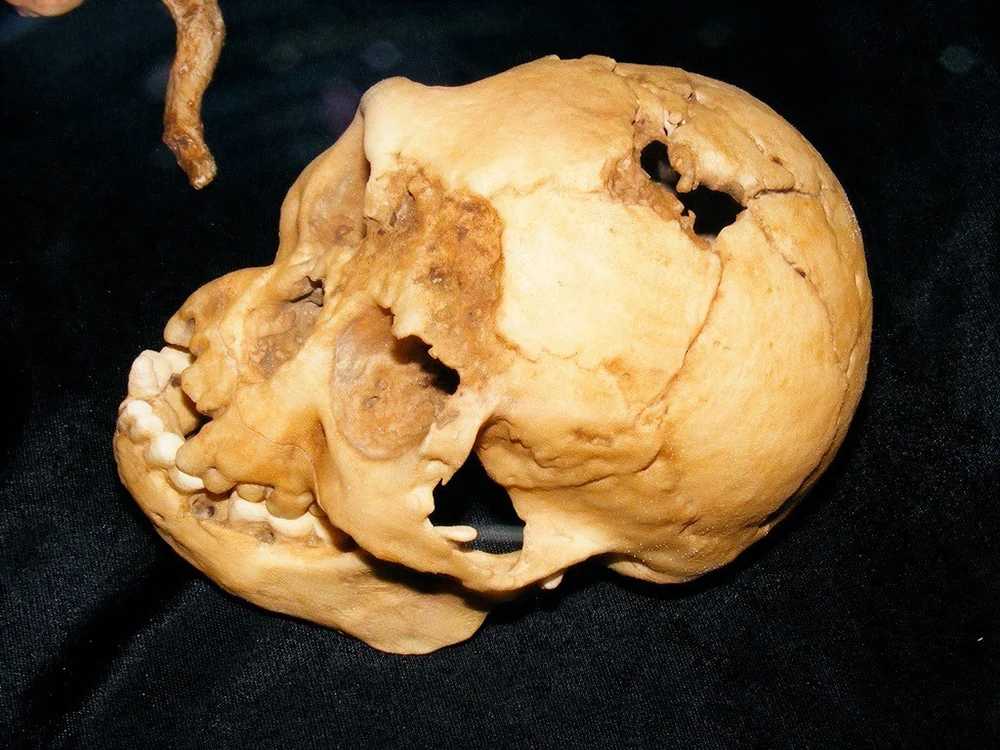In October 2004, the excavation of the fragmentary skeletal remains from the island of Flores, located in Indonesia, yielded what was deemed “the most important find in human evolution for 100 years.” The exciting discoveries dubbed the find Homo floresiensis, a name implying a previously unknown species of our evolutionary past.
A detailed reanalysis by an international team of researchers including Robert B. Eckhardt, professor of developmental genetics and evolution at Penn State, Maciej Henneberg, professor of anatomy and pathology at the University of Adelaide, and Kenneth Hsü, a Chinese geologist and paleoclimatologist, implies that the single specimen which sparked the new designation, known as LB1, actually does not represent a new species. Instead, it is the skeleton of a developmentally abnormal human and, according to the research team, contains important features that are most consistent with the diagnosis of Down syndrome.
“The skeletal sample from Liang Bua cave contains fragmentary remains of several individuals,” Eckhardt said. “LB1 has the only skull and thigh bones in the entire sample.”
No significant new bone discoveries have been made in the cave since the unearthing of LB1.
Initial descriptions of Homo floresiensis focused on LB1’s unusual anatomical characteristics: a cranial volume reported to be only 380 milliliters (23.2 cubic inches), suggesting a brain size of less than a third of an average modern human’s and short thigh bones, which were used to reconstruct a creature standing 1.06 meters (approximately 3.5 feet tall). Despite the fact that LB1 lived only 15,000 years ago, comparisons were made to earlier hominins, including Homo erectus and Australopithecus. Other traits were characterized as unique and therefore an indication of a newly discovered species.
A thorough reexamination of the available evidence in the context of clinical studies, the researchers said, suggests a different explanation.
The researchers report their findings in two papers published on August 4th, 2014, in the Proceedings of the National Academy of Sciences.
Firstly, they write, the original figures concerning the cranial volume and stature are underestimates, “markedly lower than any later attempts to confirm them.” Eckhardt, Henneberg, and other researchers have consistently found a cranial volume of about 430 milliliters (26.2 cubic inches).
“The difference is significant, and the revised figure falls in the range predicted for a modern human with Down syndrome from the same geographic region,” Eckhardt said.
The original estimate for the creature’s height at 3.5 feet was based on the extrapolation combining the short thigh bone with a formula derived from an African pygmy population. However, humans with Down syndrome also have diagnostically short thigh bones, Eckhardt said.
Though these, among other features are unusual, he acknowledged, “The difference is significant, and the revised figure falls in the range predicted for a modern human with Down syndrome from the same geographic region,” Eckhardt said.
As a result, the researchers build the case for an alternative diagnosis: that of Down syndrome, one of the most commonly occurring developmental disorders in today’s humans.
“When we first saw these bones, several of us immediately spotted a developmental disturbance,” said Eckhardt, “but we did not assign a specific diagnosis because the bones were so fragmentary. Over the years, several lines of evidence have converged on Down syndrome.
The first indicator of Down syndrome is craniofacial asymmetry, a left-right mismatch of the skull that is characteristic of this particular disorder and various others. Eckhardt and colleagues noted that this asymmetry in LB1 back in 2006, but it had not been reported by the excavating team and was dismissed as a result of the skull’s being long buried, he said.

A previously unpublished measurement of LB1’s occipital-frontal circumference – the circumference of the skull taken roughly above the tops of the ears – enabled the researchers to compare LB1 clinical data routinely collected on patients with developmental disorders. Here too, the brain size they estimate is within the range expected for an Australomelanesian human with Down syndrome.
LB1’s short thigh bones not only match the standard height reduction seen in Down syndrome humans, Eckhardt said, but when corrected statistically for normal growth, they would yield a height of approximately 1.26 meters, or just over four feet, a figure matched by some humans now residing on Flores and the surrounding regions.
These, among other Down syndrome-like characteristics, the researchers state, are present in LB1 alone, and not in the other Liang Bua skeletal remains, which is further evidence of LB1’s abnormality.
“This work is not presented in the form of a fanciful story, but to test a hypothesis: Are the skeletons from Liang Bua cave sufficiently unusual to require invention of a new human species?” Eckhardt said.
“This work is not presented in the form of a fanciful story, but to test a hypothesis: Are the skeletons from Liang Bua cave sufficiently unusual to require invention of a new human species?” Eckhardt said.
Contributing Source: Penn State
Header Image Source: WikiPedia






